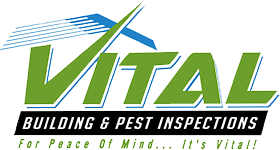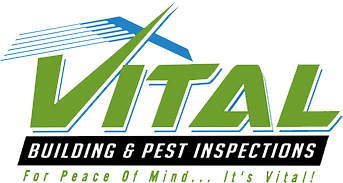What happens if the pest inspection report finds evidence of past pest infestations, but the pests are no longer present?
Pest inspections are an essential part of the real estate process in Sydney, Australia. They help to identify potential risks and hazards that may affect the value and safety of a property. As a qualified pest inspector from Vital Pest Inspections Sydney, I understand the importance of a thorough and accurate pest inspection report for both buyers and sellers.
Why pest inspections are important
Pest infestations can cause significant damage to a property, both structurally and financially. According to the Australian Pest Management Association (APMA), the cost of pest damage in Australia is estimated to be around $10 billion per year. This includes damage to buildings, furniture, and personal belongings as well as the cost of pest control services. Pest infestations can also pose health risks to occupants, such as allergies, asthma, and other respiratory issues. Therefore, it’s important to identify any potential pest issues before buying or selling a property.
The importance of a professional pest inspection
A professional pest inspection report can provide a detailed assessment of the property’s condition and identify any potential pest issues. It’s important to use a qualified and experienced pest inspector, as they have the necessary knowledge and expertise to identify pests, their signs of activity and potential damage.
According to the APMA, “A professional pest management technician will have access to the latest technology and methods to detect and control pests, and will be able to provide a comprehensive report on the condition of the property.”
The Real Estate Institute of New South Wales (REINSW) also recommends that buyers and sellers use a professional pest inspector, as it can help to protect their interests and ensure a smooth transaction. “Using a professional pest inspector can give both buyers and sellers peace of mind and can help to avoid any potential issues down the track,” says REINSW President, Leanne Pilkington.
Pest inspections are an important aspect of the real estate process in Sydney, Australia. They help to identify potential pest issues and protect the interests of both buyers and sellers.
As a qualified pest inspector from Vital Pest Inspections Sydney, I understand the importance of a thorough and accurate pest inspection report. Using a professional pest inspector can give both buyers and sellers peace of mind and can help to avoid any potential issues down the track.
What is a pest inspection report?
A pest inspection report is a document that provides a detailed assessment of a property’s condition and identifies any potential pest issues. This report is conducted by a qualified and experienced pest inspector, who has the necessary knowledge and expertise to identify pests, their signs of activity, and potential damage.
The inspection process
The inspection process typically includes a thorough examination of the property's interior and exterior, including the roof, walls, floors, and subfloor areas. The inspector will also check for any signs of pests such as droppings, nests, and gnaw marks. They will also look for any conducive conditions that may attract pests, such as moisture issues, poor ventilation, or access points for pests to enter the property.
Types of pests inspected for
The most common pests inspected in Sydney, Australia, include termites, cockroaches, ants, rats, and mice. Termites, in particular, are a significant concern as they can cause extensive damage to a property, and their presence can have a significant impact on the value of the property. According to the Australian Pest Management Association (APMA), "Termites cause more damage to homes in Australia than fire, floods, and storms combined."
Information included in the report
The pest inspection report will include a detailed assessment of the property's condition, including any potential pest issues identified during the inspection. It will also include recommendations for any necessary pest control treatments and any repairs or maintenance that may be required to prevent future pest infestations. Additionally, the report will include an overall risk assessment of the property and any potential health hazards associated with any identified pests.
The importance of a comprehensive pest inspection report
A comprehensive pest inspection report is essential for both buyers and sellers, as it provides a detailed assessment of the property's condition and identifies any potential pest issues. "A comprehensive pest inspection report can help buyers and sellers make informed decisions about the property, and can help to avoid any potential issues down the track," says Leanne Pilkington, President of the Real Estate Institute of New South Wales (REINSW).
A pest inspection report is a document that provides a detailed assessment of a property’s condition and identifies any potential pest issues. It is conducted by a qualified and experienced pest inspector, who has the necessary knowledge and expertise to identify pests, their signs of activity, and potential damage. A comprehensive pest inspection report is essential for both buyers and sellers, as it provides a detailed assessment of the property’s condition and identifies any potential pest issues.
Evidence of past pest infestations
Identifying evidence of past pest infestations is an important aspect of a pest inspection report. This evidence can provide valuable information about the property’s condition and can help buyers and sellers make informed decisions about the property. In this section, we will discuss how pests may leave behind evidence of their presence, common signs of past infestations, and the importance of identifying past infestations.
How pests leave behind evidence of their presence
Pests can leave behind a variety of signs of their presence, including droppings, nests, gnaw marks, and damage to the property’s structure. For example, termites can leave behind mud tubes, which are used to transport workers and soldiers between the colony and the food source. These tubes can be found on walls, floors, and ceilings and are a clear indication of a termite infestation. Cockroaches can leave behind droppings, which are small, dark, and cylindrical, and are often found in areas where they have been feeding, such as in kitchen cupboards and under sinks.


Common signs of past infestations
Some common signs of past infestations include:
- Damaged or hollow-sounding wood – Termites can cause significant damage to a property’s structure, and the damage may not be immediately visible.
- Visible termite tubes – As mentioned above, termites can leave behind mud tubes, which are used to transport workers and soldiers between the colony and the food source.
- Droppings or urine stains – Pests such as rats and mice can leave behind droppings or urine stains, which are often found in areas where they have been feeding or nesting.
- Gnaw marks – Rats and mice can gnaw on wood, electrical wiring, and other materials in the property.
The importance of identifying past infestations
Identifying past infestations is important for both buyers and sellers, as it can provide valuable information about the property’s condition and can help to avoid any potential issues down the track. According to the Real Estate Institute of New South Wales (REINSW), “Identifying past infestations can help buyers and sellers to make informed decisions about the property and can help to avoid any potential issues down the track.” Additionally, identifying past infestations can help to prevent future infestations by identifying and addressing any conducive conditions that may attract pests.
Identifying evidence of past pest infestations is an important aspect of a pest inspection report. Pests can leave behind a variety of signs of their presence, including droppings, nests, gnaw marks, and damage to the property’s structure. Common signs of past infestations include damaged or hollow-sounding wood, visible termite tubes, droppings or urine stains, and gnaw marks. Identifying past infestations is important for both buyers and sellers, as it can provide valuable information about the property’s condition and can help to avoid any potential issues down the track.
Implications for buyers and sellers
When buying or selling a property, it’s important to understand the implications of a past pest infestation. In this section, we will discuss how past infestations may affect the sale of a property, buyer’s rights and responsibilities when dealing with a past infestation, and seller’s rights and responsibilities when dealing with a past infestation.
How past infestations may affect the sale of a property
A past pest infestation can have a significant impact on the sale of a property. If the infestation is severe and has caused significant damage, it may affect the property’s value and make it more difficult to sell. According to the Real Estate Institute of New South Wales (REINSW), “A pest infestation can have a significant impact on the sale of a property and can affect the property’s value.” Additionally, if a past infestation is not disclosed to potential buyers, it could result in legal action.
Buyer's rights and responsibilities when dealing with a past infestation
When purchasing a property, buyers have the right to conduct a pest inspection and to receive a copy of the pest inspection report. If the report reveals a past infestation, buyers should consider the implications of the infestation and the cost of any necessary repairs or pest control treatments.
They may also negotiate with the seller to have the infestation treated or to have the cost of treatment included in the sale price.
Seller's rights and responsibilities when dealing with a past infestation

When selling a property, sellers have a legal obligation to disclose any known pest infestations to potential buyers. This includes any past infestations that have been treated or any conducive conditions that may attract pests. If a past infestation is disclosed, the seller should provide a copy of the pest inspection report and any relevant documentation, such as receipts for pest control treatments. If a past infestation is not disclosed, it could result in legal action.
In conclusion, a past pest infestation can have a significant impact on the sale of a property. When purchasing a property, buyers have the right to conduct a pest inspection and to receive a copy of the pest inspection report. If the report reveals a past infestation, buyers should consider the implications of the infestation and the cost of any necessary repairs or pest control treatments. When selling a property, sellers have a legal obligation to disclose any known pest infestations to potential buyers. If a past infestation is disclosed, the seller should provide a copy of the pest inspection report and any relevant documentation.
Managing a Past Infestation
If a pest inspection report reveals a past infestation, it’s important to understand the options for addressing the infestation and preventing future infestations. In this section, we will discuss the options for addressing a past infestation, the importance of professional pest control services, and the importance of follow-up inspections.
Options for addressing a past infestation
When addressing a past infestation, there are several options available, including:
- Pest control treatments – This can include chemical treatments, baiting systems, and physical barriers to prevent pests from entering the property.
- Repairs and maintenance – This can include sealing entry points, repairing damage caused by pests, and addressing any conducive conditions that may attract pests.
- Monitoring – This can include regular inspections to ensure that the infestation has been effectively treated and to identify any new infestations.
The importance of professional pest control services
It’s important to use professional pest control services when addressing a past infestation, as they have the necessary knowledge and expertise to effectively treat the infestation and prevent future infestations. According to the Australian Pest Management Association (APMA), “A professional pest management technician will have access to the latest technology and methods to detect and control pests.”
Additionally, professional pest control services can provide a guarantee for their work, which can give buyers and sellers peace of mind.

The importance of follow-up inspections
After addressing a past infestation, it’s important to conduct follow-up inspections to ensure that the infestation has been effectively treated and to identify any new infestations.
The Australian Pest Management Association (APMA) recommends that buyers and sellers conduct follow-up inspections every six to twelve months to ensure that the property remains pest-free. “Regular inspections can help to identify any new infestations and can help to prevent future infestations,” says the APMA.
Managing a past infestation is an important aspect of the real estate process. When addressing a past infestation, there are several options available, including pest control treatments, repairs and maintenance, and monitoring.
It’s important to use professional pest control services when addressing a past infestation, as they have the necessary knowledge and expertise to effectively treat the infestation and prevent future infestations.
Additionally, it’s important to conduct follow-up inspections to ensure that the infestation has been effectively treated and to identify any new infestations.
Pest inspections are an essential part of the real estate process in Sydney, Australia. They help to identify potential risks and hazards that may affect the value and safety of a property. A pest inspection report can provide a detailed assessment of the property’s condition and identify any potential pest issues, including evidence of past infestations.
Evidence of past infestations can have a significant impact on the sale of a property. It’s important for buyers and sellers to understand the implications of a past infestation, including the options for addressing the infestation and preventing future infestations. Using professional pest control services is crucial in addressing a past infestation, as they have the necessary knowledge and expertise to effectively treat the infestation and prevent future infestations.
Regular follow-up inspections are also essential in ensuring that the infestation has been effectively treated and to identify any new infestations. As a qualified pest inspector from Vital Pest Inspections Sydney, I understand the importance of a thorough and accurate pest inspection report for both buyers and sellers. “A comprehensive pest inspection report can help buyers and sellers make informed decisions about the property and can help to avoid any potential issues down the track,” says Leanne Pilkington, President of the Real Estate Institute of New South Wales (REINSW).
In conclusion, a comprehensive pest inspection report is essential for both buyers and sellers, as it provides a detailed assessment of the property’s condition and identifies any potential pest issues. Identifying past infestations is important for both buyers and sellers, as it can provide valuable information about the property’s condition and can help to avoid any potential issues down the track. Using a professional pest inspector can give both buyers and sellers peace of mind and can help to avoid any potential issues down the track.
FAQs
It means that the property has had a previous pest infestation, but the pests have been eliminated and the property has been treated to prevent future infestations.
A past pest infestation can have a significant impact on the sale of a property. If the infestation is severe and has caused significant damage, it may affect the property’s value and make it more difficult to sell.
When purchasing a property, buyers have the right to conduct a pest inspection and to receive a copy of the pest inspection report. If the report reveals a past infestation, buyers should consider the implications of the infestation and the cost of any necessary repairs or pest control treatments. They may also negotiate with the seller to have the infestation treated or to have the cost of treatment included in the sale price.
When selling a property, sellers have a legal obligation to disclose any known pest infestations to potential buyers. This includes any past infestations that have been treated or any conducive conditions that may attract pests. If a past infestation is disclosed, the seller should provide a copy of the pest inspection report and any relevant documentation, such as receipts for pest control treatments.
When addressing a past infestation, there are several options available, including: pest control treatments, repairs and maintenance, and monitoring. It’s important to use professional pest control services when addressing a past infestation, as they have the necessary knowledge and expertise to effectively treat the infestation and prevent future infestations.
Yes, it is important to conduct follow-up inspections to ensure that the infestation has been effectively treated and to identify any new infestations. The Australian Pest Management Association (APMA) recommends that buyers and sellers conduct follow-up inspections every six to twelve months to ensure that the property remains pest-free.


